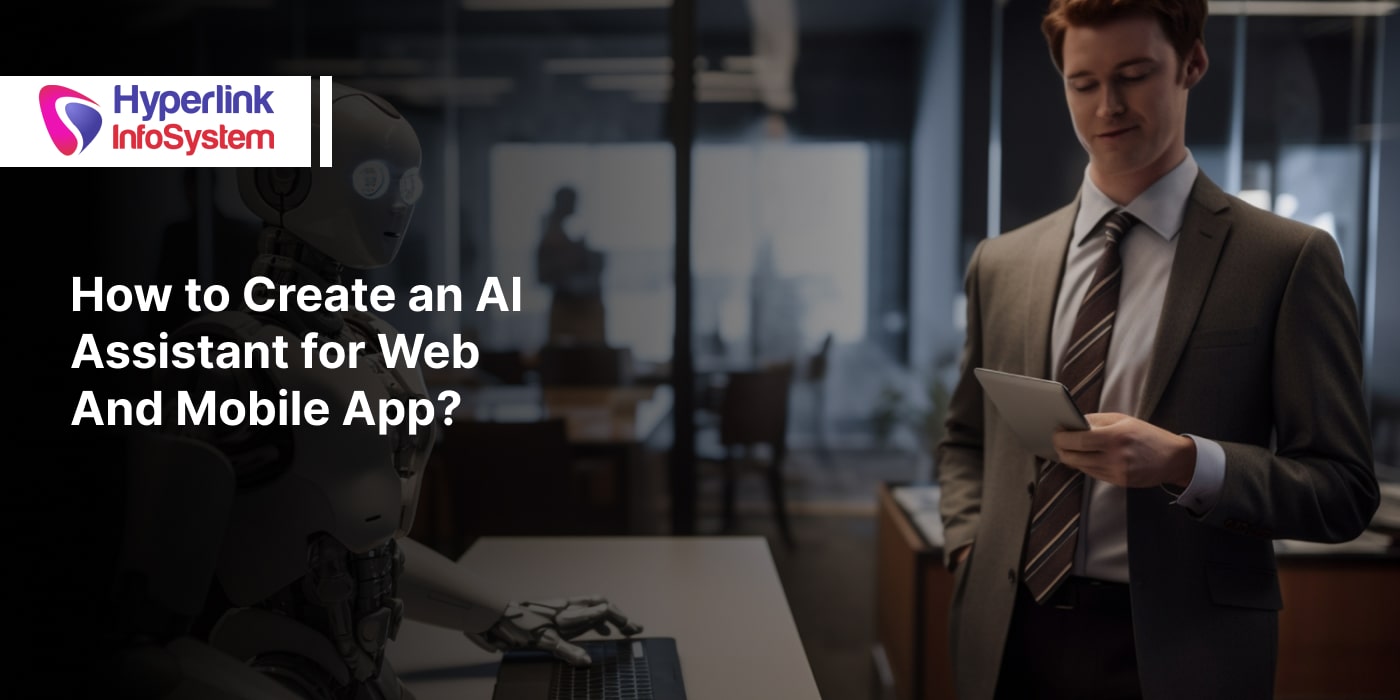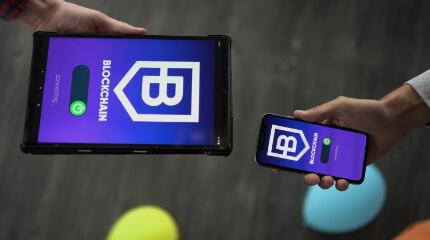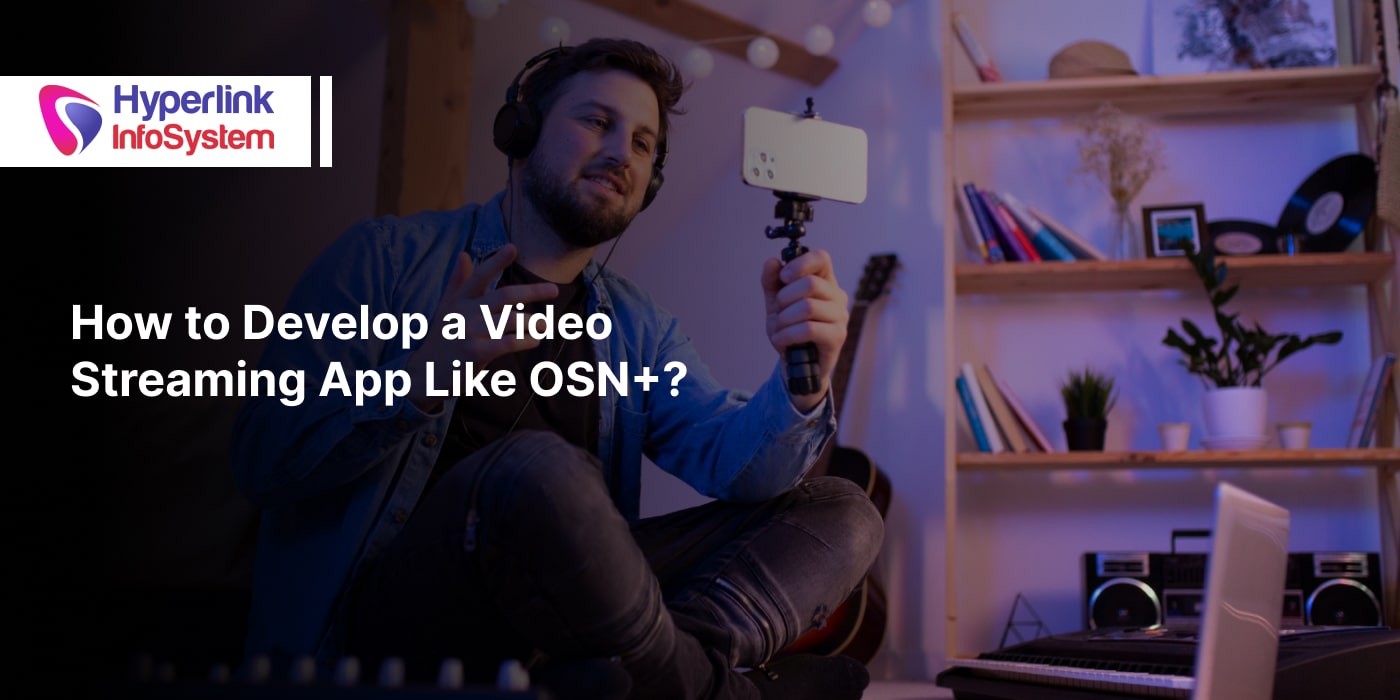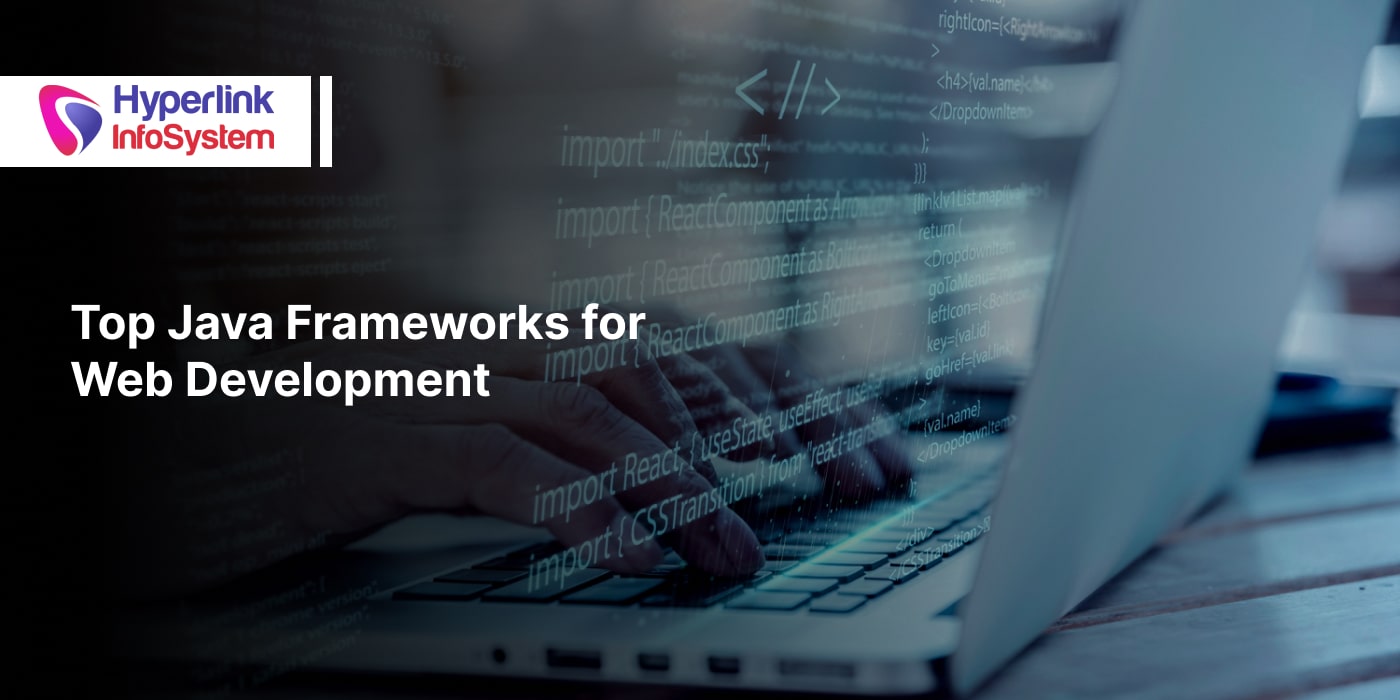How To Create an AI Assistant for Web and Mobile App?
Jul 2024

Artificial intelligence or AI has completely transformed human interactions with technology. One of the amazingly significant uses of AI is rendering users with the creation of AI assistants that could streamline the entire interactive experience. AI assistants have become a crucial part of the mobile app development services sector, and chatbot development tops this segment. Whether you need to make recommendations, do some mundane data tasks, or answer questions, AI algorithms help you with everything. The demand for smart virtual assistants has rapidly increased in the past five years, with more enterprises and entrepreneurs seeking out solutions that are tailored and efficient.
Natural language processing (NLP), machine learning, and user interface design all serve an integral part in developing an AI assistant. The following piece will lead you through the procedure needed to create your own AI assistant for online and mobile applications. An artificial intelligence (AI) assistant is a smart sidekick in the form of a software agent who can conduct tasks or provide services in response to instructions from humans or queries. These digital assistants employ natural language processing (NLP), machine learning, and other artificial intelligence (AI) algorithms to comprehend and adjust to user stimuli in an identical way to humans. Developing an AI assistant for your online or mobile app can improve engagement among users, optimize productivity, and deliver individualized user experiences. This blog will guide you through the steps of creating an AI assistant, from concept to execution along with many other crucial factors.
What Is AI Digital Assistant and Its Types?
An artificial intelligence assistant is a software agent curated by dedicated developers for hire that performs activities or services for humans in response to directives or prompts. But why develop your AI assistance? Because it deciphers and reacts to user inputs utilizing AI technologies such as natural language processing (NLP) and machine learning (ML). Before you hire dedicated developers for your AI chatbot development, it's vital to understand its classifications based on their functionality:
Predictive Assistants
These AI assistants or helpers utilize machine learning algorithms to anticipate your requirements and offer proactively relevant suggestions or services based on previous activities, even before they are requested. Although whenever they are still in the development phase, they have the capability to enhance their proficiency and production. Many such personal assistant programs leverage ML to understand and adapt to users' behavioral patterns to offer custom suggestions for optimizing their day-to-day activities.
Voice-activated Assistants
Almost everyone is familiar with the concept of voice-driven assistants and utilizes them in their daily lives, such as Apple's Siri, Amazon Alexa, Cortana, and even Google Assistant. Each of them is individually and deeply integrated into their respective ecosystems. These voice-activated assistants have transfigured the way we interact with technology. Going beyond speakers, they’re seamlessly integrated inside your earbuds as well, enabling convenient user interactions on the go. Using natural language commands, these smart solutions are perfect for home devices, and accessing information is kind of effortless.
Task-oriented Assistants
This is among the custom AI development solutions that are designed for specialized duties, performing specific jobs effectively, and meeting your demands with convenience and accuracy. These AI assistants excel at managing daily mundane tasks like appointment scheduling, curating or restructuring to-do lists, managing email responses, providing customer service, and controlling smart home gadgets. It helps users get hands-free service with assignments across their online workspace.
How to Create an AI Assistant for Web And Mobile Apps? A Step-by-step Guide
Whether you hire iPhone app developers, contact a top mobile app development company, or Google how to build an AI assistant software from scratch, the first step is to study and comprehend the process. As the expression goes, "the journey is as important as the destination," which applies wonderfully here. This AI chatbot adventure consists of a captivating blend of carefully constructed phases that work together to enhance your AI assistant's competencies.
Step 1: Identify the Motive of Your AI Assistant
Every AI development company builds an AI assistant specific to its niche or purpose. Before debating about selecting the best tech stack for a personal assistant AI app, understand the functionalities you want inside your AI helper. Do you need AI assistance for solving personal daily issues or activities or custom AI development solutions for your brand's website for solving customer queries? Defining the AI solution's purpose clarifies the whole development process. Start asking your AI engineers questions like:
- What problem are we targeting or solving?
- What kind of tasks can it perform?
- Who is this AI assistant targeted towards?
This will help you make smarter choices, especially when hiring web developers during the pre-development process.
Step 2: Select the Ideal Technology Stack
The best tech stack for personal assistant AI app depends on a variety of factors. Common elements like your chosen web development company, team expertise in terms of AI development solutions, along any specific capabilities you wish to infuse into your chatbot development play a huge role. Some widely chosen mobile app development services for building AI assistant software are:
Speech Recognition and Synthesis: To authorize your AI assistant to address voice instructions and responses, probe libraries like CMU Sphinx and Google Text-to-Speech. These components deliver voice recognition and synthesis capacities for your AI assistant.
ML Libraries: By utilizing libraries like TensorFlow and PyTorch, you can incorporate a magnanimous level of machine learning capabilities into your AI assistant.
Natural Language Processing (NLP): For your AI assistant to learn and produce human-like vocabulary, you will require an NLP library or framework like- Hugging Face’s Transformers, spaCy, and NLTK.
Step 3: Accumulate and Formulate Data
AI assistants are completely reliant on data to perform accurately. For appropriate training AI in understanding and rendering precise human language, it's vital to get access to huge data sets. You can acquire data from a medley of sources, like web scraping and public databases. Likewise, you can develop your dataset by manually compiling and annotating text.
Step 4: Preliminary processing and Data Filtering
Preprocessing data after gathering it is indispensable. This involves organizing and classifying data to make it appropriate for training. Preprocessing activities usually involve tokenization. Splitting text into individual terms or tokens and eliminating unneeded words such as "and," "the," and "in" can improve translucency.
Step 5: Coaching Your AI Assistant
Training your AI assistant software encompasses harnessing the best of advanced machine learning models. ML helps in educating users on how to understand and prompty respond to any user input. Some of the steps shall be measured by the best tech stack for a personal assistant AI app chosen by you.
- Feeding your custom preprocessed inputs into the prototype
- Fine-tuning the pinnacle of your explicit tasks
- Reckoning the model’s interpretation and pushing refinements
Step 6: Develop the User Interface
The user interface (UI) is instrumental to your AI assistant's functionality, acting as an administrative hub for effortless interaction. It determines how people become involved with the assistant and how well it understands their needs and wants. When designing the UI, remember these key aspects:
Create a visualization outlining your AI assistant's linguistic path, incorporating into account different inputs from users along with suitable responses. This facilitates seamless and intuitive contact with the public.
Design an easily navigable and intelligent assistant that guarantees that everything is perfect for your target market. This method will guarantee optimum involvement and satisfaction among those who use your product.
Step 7: Enforce Voice Recognition
If you're building AI assistant software that needs audio recognition or speech-to-text-like capabilities. If you wish to comprehend and increase your knowledge about AI assistant voice commands and capabilities, the ball's in your court. Consider implementing a voice recognition system that boasts compatibility with particularly selected tech stacks by your outsourced AI development company.
Step 8: Troubleshooting and Debug
Comprehensive testing must be performed to guarantee that your AI assistant functions effectively and responds as intended. This entails testing multiple inputs, especially critical situations, and resolving any shortcomings that pop up to guarantee accurate functioning.
Step 9: Deployment
After having completed the initial development of your AI assistant, the subsequent step is to roll it out to the people you want to serve. Deployment techniques could vary based on the platform being used, such as an independent application or website. The aim is to make sure that your AI-powered assistant effectively approaches and interacts with its intended demographic.
Step 10: Ongoing Improvement
Once you've deployed your AI assistant, its duties don't end. Measuring its efficiency and obtaining feedback from individuals is essential for ensuring that it stays relevant and profitable. Utilize this review data to continuously develop and expand your AI assistant's features by considering user interaction and statistics.
Ethical Considerations For Building an AI Assistant
According to research and studies, there is a percentage of youngsters who are skeptical of the emotive and cognitive skills of AI-powered assistants like Siri and Alexa. Such assistants have blurred the actual lines between machine and human interactions, which ushers toward a future where machines will play increasingly complex roles in materializing human incidents. Hence, it's important to remember that before Googling how to build an AI assistant software, understand the ethical responsibilities that come along with it.
The AI Act laid down by the EU mandates a worldwide standard for responsible AI development by classifying associated risks and setting rules on human monitoring, openness, and responsibility. This implies that when you hire AI developers or even Android app developers, the compliance process changes for each. This encompasses user transparency measures, the assembly of human monitoring systems along risk assessments.
Privacy And Data Security Concerns
Ask any web development company or business providing dedicated developers for hire; adhering to privacy regulations for your AI assistant is one of the top five things that'll come up. Implementing strong security measures to safeguard user information and yield transparency on data collection, storage, and utilization needs to be considered.
- Hide and Authenticate User Data: The elimination of sensitive information, such as usernames or contact details, enables artificially intelligent assistants to deliver customized interactions while minimizing the risk of data theft or misconduct.
- Frequently Perform Safety Audits: Vulnerability evaluations allow you to uncover and resolve any shortcomings in the AI Assistant's security framework. This preventative plan promises that the AI assistant is durable to constantly changing hazards while offering a safe atmosphere for consumers.
Guarantee Impartiality & Avoid Prejudice in AI
Biases come as a result of the data employed to train the AI assistant. Hence, leading to inequities or illustrating society's prejudices. In order to overcome this, training your AI assistant before you hire developers remotely is much more important. Your AI Assistant is trained on a broad spectrum of datasets that suitably reflect the real-world population. By incorporating data from multiple demographics, backgrounds, and regions, the AI Assistant can be trained to respond in an inclusive and unbiased manner. Additionally:
- Regularly Examine the AI assistant’s Rendition: Evaluate how it communicates with individuals to detect any possible prejudices or inequality in its answers. Consequently, programmers may take remedial steps to strengthen the AI Assistant's algorithms to guarantee impartiality.
- Implicate Miscellaneous Groups In The Development Cycle: Engineers can detect and address any prejudices that could develop throughout the AI Assistant's maturation. This cooperative strategy promotes the egalitarian and moral usage of AI technologies.
Conclusion
Curating any AI development solutions, specifically, chatbots for web and mobile apps, implicates a sequence of well-defined stages for success. It needs a special combination of user-centric design, ongoing enhancements, and an expert level of technical proficiency. Another factor to be determined before development is the product's purpose for testing and iterating. By using the best tech stack for personal assistant AI apps and following the above-mentioned steps, you can develop a robust and user-friendly AI assistant that increases user engagement and provides value to your offerings. Since artificial intelligence development is an ever-evolving field, being updated on the latest trends and advancements will help you keep chatbots relevant and updated. By following the above steps, and defining your niche, you can build a fantastic AI-driven assistant.
It's also important to determine the preeminence of data privacy, ethical considerations, and user experience throughout the entire development lifecycle. To realize the full potential of AI for chatbot development for various enterprises and individuals, it is beneficial to collaborate with an experienced AI development company, such as Hyperlink InfoSystem. Being a top mobile app development company, Hyperlink InfoSystem is a pioneer when it comes to artificial intelligence development services. Their trusted team of specialists will supply you with all of the tools and expertise needed to use the potential of AI in chatbot assistance while maintaining a competitive advantage. Our team of AI developers employs the best tech stack for personal assistant AI apps to evaluate your needs and recommend the optimal AI chatbot solutions for your business. We are well-known for developing unique AI solutions, integrating AI into your current data architecture, and ensuring exact data monitoring. Hyperlink InfoSystem also offers comprehensive performance assistance to ensure the smooth integration of AI into your operations.
Frequently Asked Questions
The best tech stack for personal assistant AI apps depends on many factors but some popular platforms to design your AI assistants include:
- Amazon Lex
- Google Dialogflow
- IBM Watson Assistant
- Microsoft Bot Framework
Yes, you can use pre-trained models to build your personal assistant AI app. Not only does it accelerate development, but fine-tuning makes the performance even more credible.
Some common challenges that come with developing AI assistant software are:
- Comprehensive understanding of natural language
- Quality of data
- Accuracy of model
- Continuous improvement
Machine learning empowers AI assistants to acquire knowledge through encounters, and adapt as time passes while providing more precise and personalized response messages.
Latest Blogs

Is BlockChain Technology Worth The H ...
Unfolds The Revolutionary & Versatility Of Blockchain Technology ...


IoT Technology - A Future In Making ...
Everything You Need To Know About IoT Technology ...

Feel Free to Contact Us!
We would be happy to hear from you, please fill in the form below or mail us your requirements on info@hyperlinkinfosystem.com
Hyperlink InfoSystem Bring Transformation For Global Businesses
Starting from listening to your business problems to delivering accurate solutions; we make sure to follow industry-specific standards and combine them with our technical knowledge, development expertise, and extensive research.
4500+
Apps Developed
1200+
Developers
2200+
Websites Designed
140+
Games Developed
120+
AI & IoT Solutions
2700+
Happy Clients
120+
Salesforce Solutions

40+
Data Science

















